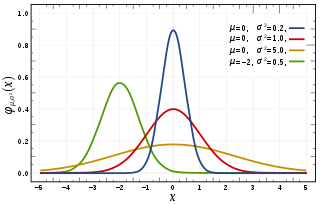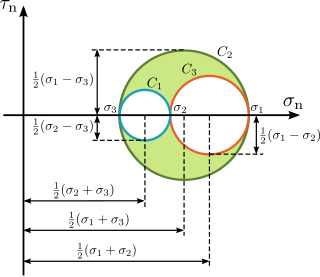Maps written on the left
First we assume that maps are written on the left of their arguments, so that compositions take place from right to left. Let  be the symmetric group [2] on
be the symmetric group [2] on  letters, with compositions computed from right to left.
letters, with compositions computed from right to left.
Imagine a situation in which elements of  act [3] on the “places” (i.e., positions) of something. The places could be vertices of a regular polygon of
act [3] on the “places” (i.e., positions) of something. The places could be vertices of a regular polygon of  sides, the tensor positions of a simple tensor, or even the inputs of a polynomial of
sides, the tensor positions of a simple tensor, or even the inputs of a polynomial of  variables. So we have
variables. So we have  places, numbered in order from 1 to
places, numbered in order from 1 to  , occupied by
, occupied by  objects that we can number
objects that we can number  . In short, we can regard our items as a word
. In short, we can regard our items as a word of length
of length  in which the position of each element is significant. Now what does it mean to act by “place-permutation” on
in which the position of each element is significant. Now what does it mean to act by “place-permutation” on  ? There are two possible answers:
? There are two possible answers:
- an element
 can move the item in the
can move the item in the  th place to the
th place to the  th place, or
th place, or - it can do the opposite, moving an item from the
 th place to the
th place to the  th place.
th place.
Each of these interpretations of the meaning of an “action” by  (on the places) is equally natural, and both are widely used by mathematicians. Thus, when encountering an instance of a "place-permutation" action one must take care to determine from the context which interpretation is intended, if the author does not give specific formulas.
(on the places) is equally natural, and both are widely used by mathematicians. Thus, when encountering an instance of a "place-permutation" action one must take care to determine from the context which interpretation is intended, if the author does not give specific formulas.
Consider the first interpretation. The following descriptions are all equivalent ways to describe the rule for the first interpretation of the action:
- For each
 , move the item in the
, move the item in the  th place to the
th place to the  th place.
th place. - For each
 , move the item in the
, move the item in the  th place to the
th place to the  th place.
th place. - For each
 , replace the item in the
, replace the item in the  th position by the one that was in the
th position by the one that was in the  th place.
th place.
This action may be written as the rule  .
.
Now if we act on this by another permutation  then we need to first relabel the items by writing
then we need to first relabel the items by writing  . Then
. Then  takes this to
takes this to  This proves that the action is a left action:
This proves that the action is a left action:  .
.
Now we consider the second interpretation of the action of  , which is the opposite of the first. The following descriptions of the second interpretation are all equivalent:
, which is the opposite of the first. The following descriptions of the second interpretation are all equivalent:
- For each
 , move the item in the
, move the item in the  th place to the
th place to the  th place.
th place. - For each
 , move the item in the
, move the item in the  th place to the
th place to the  th place.
th place. - For each
 , replace the item in the
, replace the item in the  th position by the one that was in the
th position by the one that was in the  th place.
th place.
This action may be written as the rule  .
.
In order to act on this by another permutation  , again we first relabel the items by writing
, again we first relabel the items by writing  . Then the action of
. Then the action of  takes this to
takes this to  This proves that our second interpretation of the action is a right action:
This proves that our second interpretation of the action is a right action:  .
.
Example
If  is the 3-cycle
is the 3-cycle  and
and  is the transposition
is the transposition  , then since we write maps on the left of their arguments we have
, then since we write maps on the left of their arguments we have  Using the first interpretation we have
Using the first interpretation we have  , the result of which agrees with the action of
, the result of which agrees with the action of  on
on  . So
. So  .
.
On the other hand, if we use the second interpretation, we have  , the result of which agrees with the action of
, the result of which agrees with the action of  on
on  . So
. So  .
.
Maps written on the right
Sometimes people like to write maps on the right [4] of their arguments. This is a convenient convention to adopt when working with symmetric groups as diagram algebras, for instance, since then one may read compositions from left to right instead of from right to left. The question is: how does this affect the two interpretations of the place-permutation action of a symmetric group?
The answer is simple. By writing maps on the right instead of on the left we are reversing the order of composition, so in effect we replace  by its opposite group
by its opposite group  . This is the same group, but the order of compositions is reversed.
. This is the same group, but the order of compositions is reversed.
Reversing the order of compositions evidently changes left actions into right ones, and vice versa, changes right actions into left ones. This means that our first interpretation becomes a right action while the second becomes a left one.
In symbols, this means that the action  is now a right action, while the action
is now a right action, while the action  is now a left action.
is now a left action.
Example
We let  be the 3-cycle
be the 3-cycle  and
and  the transposition
the transposition  , as before. Since we now write maps on the right of their arguments we have
, as before. Since we now write maps on the right of their arguments we have  Using the first interpretation we have
Using the first interpretation we have  , the result of which agrees with the action of
, the result of which agrees with the action of  on
on  . So
. So  .
.
On the other hand, if we use the second interpretation, we have  , the result of which agrees with the action of
, the result of which agrees with the action of  on
on  . So
. So  .
.









































